Visual Arts Practice and Affect
Place, Memory, Affect
Series Editors: Neil Campbell, Professor of American Studies at the University of Derby and Christine Berberich, School of Social, Historical and Literary Studies at the University of Portsmouth.
The Place, Memory, Affect series seeks to extend and deepen debates around the intersections of place, memory, and affect in innovative and challenging ways. The series will forge an agenda for new approaches to the edgy relations of people and place within the transnational global cultures of the twenty-first century and beyond.
Walking Inside Out edited by Tina Richardson
The Last Isle: Contemporary Taiwan Film, Culture, and Trauma by Sheng-mei Ma
Divided Subjects, Invisible Borders: Re-Unified Germany after 1989 by Ben Gook
The Mothers Day Protest and Other Fictocritical Essays by Stephen Muecke
Affective Critical Regionality by Neil Campbell
Visual Arts Practice and Affect edited by Ann Schilo
Haunted Landscapes edited by Ruth Heholt and Niamh Downing (forthcoming)
In the Ruins of the Cold War Bunker edited by Luke Bennett (forthcoming)
Visual Arts Practice and Affect
Place, Materiality and Embodied Knowing
Edited by Ann Schilo

London New York
Published by Rowman & Littlefield International Ltd
Unit A, Whitacre Mews, 26-34 Stannary Street, London SE11 4AB
www.rowmaninternational.com
Rowman & Littlefield International Ltd.is an affiliate of Rowman & Littlefield
4501 Forbes Boulevard, Suite 200, Lanham, Maryland 20706, USA
With additional offices in Boulder, New York, Toronto (Canada), and Plymouth (UK)
www.rowman.com
Selections and Editorial Matter Anne Schilo 2016
All rights reserved. No part of this book may be reproduced in any form or by any electronic or mechanical means, including information storage and retrieval systems, without written permission from the publisher, except by a reviewer who may quote passages in a review.
British Library Cataloguing in Publication Data
A catalogue record for this book is available from the British Library
ISBN: HB 978-1-78348-736-3
PB 978-1-78348-737-0
Library of Congress Cataloging-in-Publication Data Available
Names: Schilo, Ann, editor.
Title: Visual arts practice and affect : place, materiality and embodied knowing / edited by Ann Schilo.
Description: Lanham, Maryland : Rowman & Littlefield International, 2016. | Series: Place, memory, affect | Includes bibliographical references and index.
Identifiers: LCCN 2016033794 (print) | LCCN 2016033933 (ebook) | ISBN 9781783487363 (cloth : alk. paper) | ISBN 9781783487370 (pbk. : alk. paper) | ISBN 9781783487387 (Electronic)
Subjects: LCSH: ArtPsychology. | Place (Philosophy) in art. | Meaning (Philosophy) | Artists writings.
Classification: LCC N71 .V576 2016 (print) | LCC N71 (ebook) | DDC 701dc23
LC record available at https://lccn.loc.gov/2016033794
 The paper used in this publication meets the minimum requirements of American National Standard for Information SciencesPermanence of Paper for Printed Library Materials, ANSI/NISO Z39.48-1992.
The paper used in this publication meets the minimum requirements of American National Standard for Information SciencesPermanence of Paper for Printed Library Materials, ANSI/NISO Z39.48-1992.
Printed in the United States of America
For you
Never doubt
Contents
Ann Schilo
Anna Nazzari
Ann Schilo
Ann Schilo
Ann Schilo
Thea Costantino
Ann Schilo
Anna Sabadini
Ann Schilo
Susanna Castleden
| Anna Nazzari, Snowballs Auction House Sperm Whales Teeth , 2013 |
| Anna Nazzari, The Sance , 2014 |
| Anna Nazzari, The Burial Grounds , 2014 |
| Anna Nazzari, The Phantom Leg , 2015 |
| Jane Currie, Panorama of the Swan River Colony (Detail), 18301832 45 |
| Thea Costantino, Lacrymae Imperiales I, II, III , 2013 |
| Thea Costantino, The Valley ( after Bayliss ) (Detail), 2015 |
| Thea Costantino, Untitled ( Greenough ) , 1997 |
| Anna Sabadini, Monster , 2015 |
| Anna Sabadini, Animal , 2015 |
| Anna Sabadini, Small Clear Bits of Jagged Mountain , 2015 |
| Susanna Castleden, Round-the-world print ( New York pavement ) (Detail), 20122013 |
| Susanna Castleden, Round-the-world print, hand luggage box , 20122013 |
| Susanna Castleden, St Catherines Fort, Bermuda , 2012 |
While this work may be a modest contribution to the understanding of the importance of visual arts as a way of knowing, it has made a significant impact on our intellectual lives, both individually and collectively, as artist scholars. It is a testament to the creative spirit, love, generosity, and damn hard work of five women who squirreled away time to think, write, and reflect, amidst their complex lives while wearing multiple guises as lecturers, course coordinators, programme managers, administrators, artists, family members, carers, partners, lovers, and friends. Over the course of this collaboration, we have grown with great and humble respect for each others intelligence, goodwill, humour, tirelessness, and support. This artful conversation could not have been achieved without each other.
A good idea at the time does not publish itself. We are grateful to commissioning editor, Martina Sullivan, and series editors, Christine Berberich and Neil Campbell, who have had faith in the project from the beginning and have provided support and advice throughout. Equally, we thank the anonymous reviewers for their insightful comments that enabled us craft our conversations. Particularly, our gratitude extends to our copy editor, Dean Chan, for his considerable talent and eagle-eyed scrutiny of the draft manuscript. Julianne Clifford gave very valuable assistance in the early stages of this project as a research assistant.
This work has been crafted over fragments of time in our academic working lives, between occasional research days, semester breaks, weekends, family holidays, and sleepless nights. We appreciate the support of our colleagues in the School of Design and Art at Curtin University who filled in some of the gaps in the working week that allowed us writing time; thanks are also due to our students who understood when we were a day or two late in returning feedback on their draft essays.
Most of all, this book is the result of support from people in our lives who have been there for us when weve lost the plot, when weve needed a laugh, or someone else to cook the dinner, or look after the dog, or have given us critical support and encouragement, or told us we are on the wrong track, or even the right one! In a work that is in part about embodiment, it is difficult to put flesh and blood around all these kindnesses without writing a novel in its own right. You have been there for us. This following public naming is but a small recognition of our deepest thanks, love, and respect:
Paola Anselmi, Michelle Becker, Sue Briggs, Kate Campbell-Pope, Gina Cinanni, Erin Coates, Vince Costantino, Christopher Crouch, Brian Doherty, Moira Doropoulos, Lesley Duxbury, Barbie Greenshields, Bevan Honey, Mia Honey, Stella Honey, Melannie Nazzari, Rachel Robertson, Jane Richens, Elizabeth Riley, Adelina Sabadini, Walter Schilo, Bruce Slatter, Justin Strange, Joan Wardrop, Kerri Wilkes, Pauline Williams.
Ann Schilo
This is a conversation between you and I, between us. With this initial sentence, we already encounter ideas in the first instance, about our subject positions: you, the reader of my imagination, and I, the writer who in this book takes a number of guises, and whose biographical details provide you with a tenuous legitimacy to my authorial claims. And secondly, though perhaps, more crucially for how these ideas unfold, the sentence begins with a proposition to you to enter into a conversation. Of course, we cant physically do that as though we are sitting alongside each other on a train, or by a fireside, or over a table in the kitchen; rather, it is a manner of conversing through writing and reading. My address to you takes inspiration from Rebecca Solnit (2003), who notes how conversation plays a critical role in both the way she works with and alongside artists, as well as in her approach to writing. And like her, we, the authors of this book, are interested in the slippages, associations, disjunctions, and reflections that occur in our encounters with art and when we speak to one another. In both instances, whether it is a look, a texture, a colourful phrase, a memory of another occasion, an uncomfortable word, something affects the interplay of ideas and interests. So, rather than demand that you pay attention to my inquiry, as if directed by an officious autocrat, by following from point to point in a linear logical order, which has been a well-used formula for conventional scholarly writing, I approach this conversationally wherein ideas collage, layer, do things irreverently, arise, disappear, are messy, and even untamed in the hope that you also find moments that excite your scholarly imagination in a similar way that art seduces.
Next page
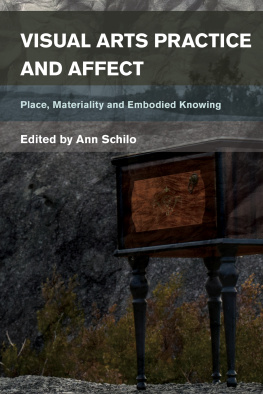

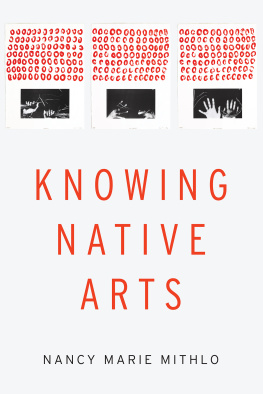

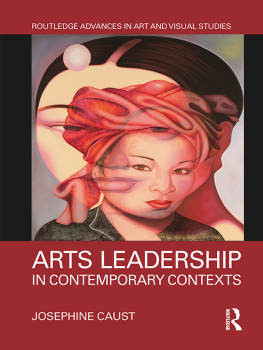
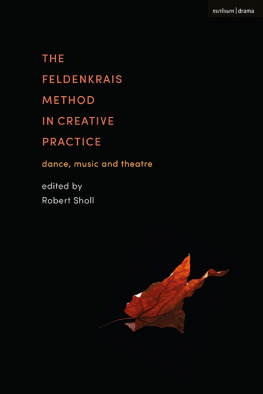
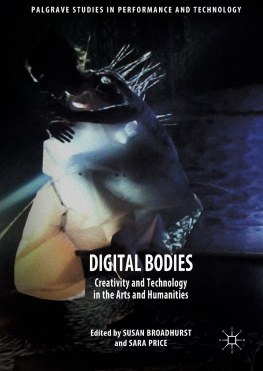
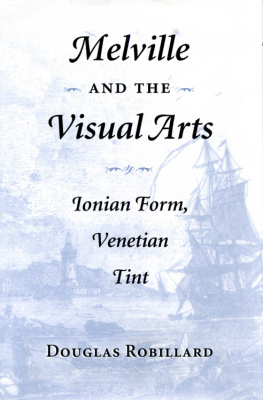
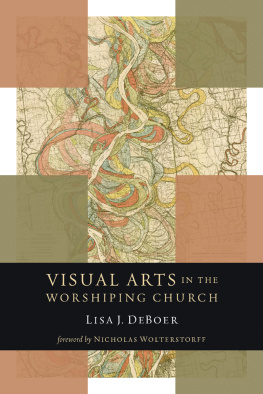
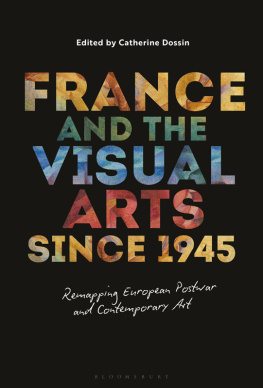
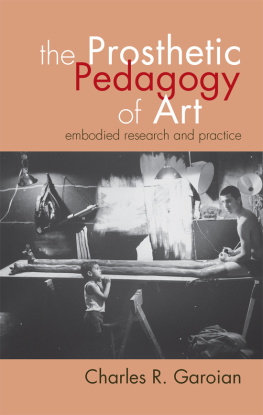


 The paper used in this publication meets the minimum requirements of American National Standard for Information SciencesPermanence of Paper for Printed Library Materials, ANSI/NISO Z39.48-1992.
The paper used in this publication meets the minimum requirements of American National Standard for Information SciencesPermanence of Paper for Printed Library Materials, ANSI/NISO Z39.48-1992.